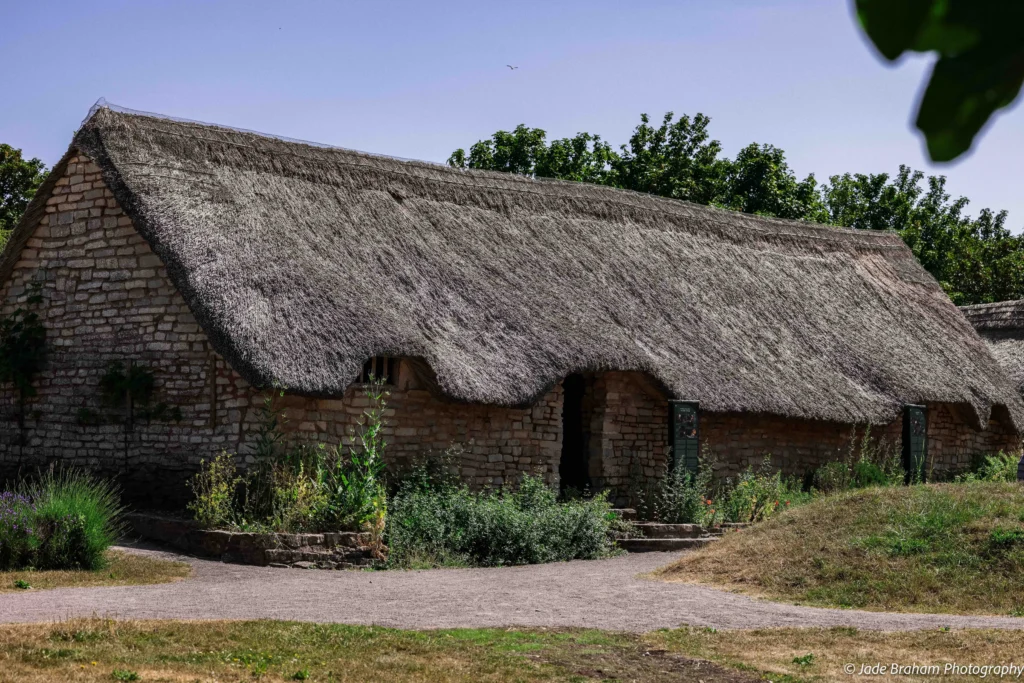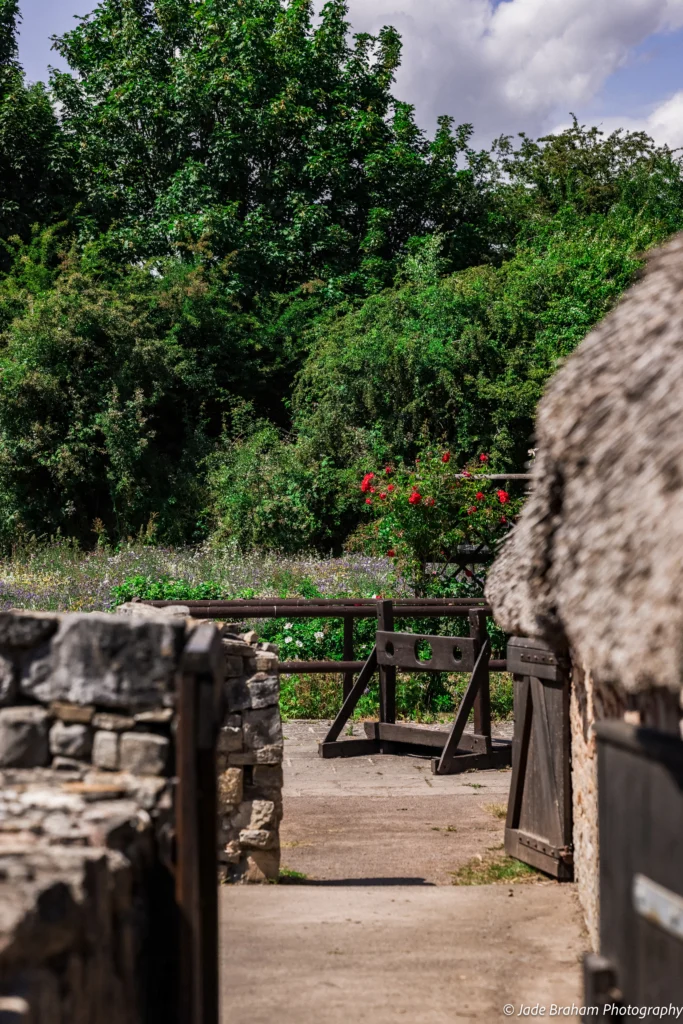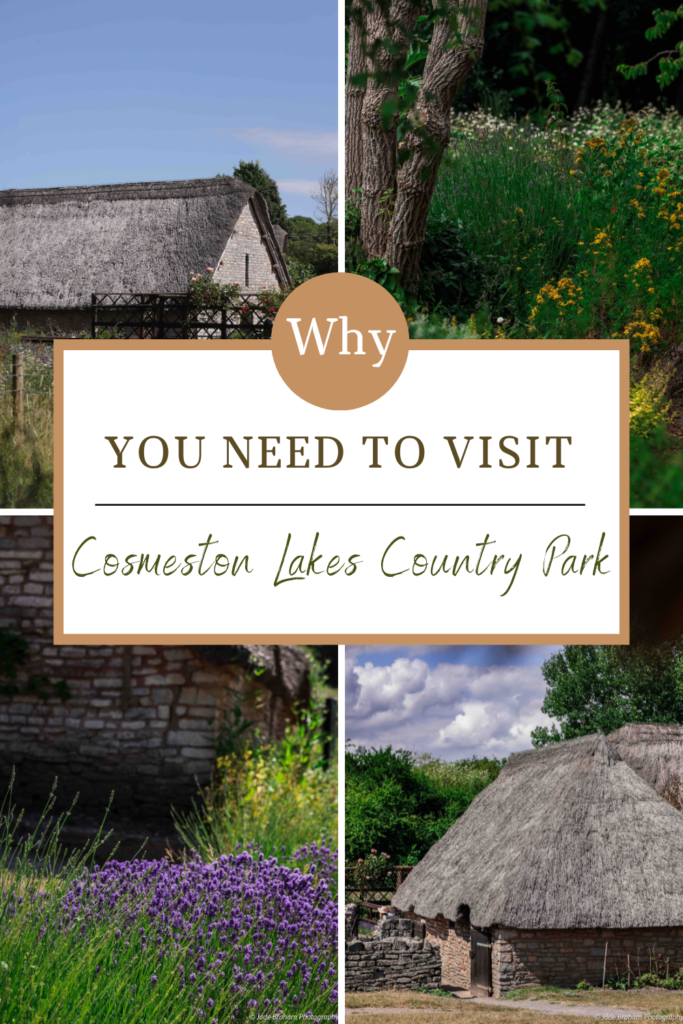Cosmeston Lakes Country Park & Medieval Village Ultimate Guide
Cosmeston Lakes Country Park is a stunning natural haven situated within the lush landscapes of the Vale of Glamorgan in South Wales. Spanning over 100 hectares, the park boasts two large lakes formed from former limestone quarries, which offer a serene beauty and idyllic lakeside walks. Cosmeston is ideal for your next day out with the family, and while you are there, make sure to explore the Cosmeston Medieval Village. The latter is a unique archaeological site with reconstructed 14th-century houses, making it one of the best South Wales attractions to visit in 2024 (in my opinion).


What makes Cosmeston Lakes Country Park Special?
Cosmeston Lakes Country Park seamlessly blends natural beauty with historical charm and has 25.6 hectares designated as a Site of Special Scientific Interest. This protects lakes as glistening as any Welsh coastline, woodland walks as breathtaking as any mountaintop view, and a rare and endangered plant called Starry Stonewort. This alga only grows in lakes between one and six metres deep and at low altitudes, making Cosmeston Lakes Country Park a unique location in Wales for a day out with the family.

The site opened in 1978 to the public, and in May 2013, it gained Local Nature Reserve status. Cosmeston Lakes Country Park has since become a social destination for locals. Children feed the ducks and chase unsuspecting birds. Families lounge beneath towering trees or in the Barbecue Area, devouring a homemade picnic while their kids run around the play area. Furry four-legged creatures usually jump in the rippling water of the Eastern Lake for a refreshing cooldown, as do toddlers. You might also spot a squirrel or two climbing the ancient trees and a diverse range of wildlife, including swans, waterfowl, and mallards, roaming around as if the place were their own.



Cosmeston facilities at a glance
-
-
- Adventure playground
- Cafe
- Picnic areas
- Dog friendly
- Reception with gift shop
- Free wheelchair hire
- Bicycles are welcome
- Conservation areas
- Swimming is prohibited
- Woodlands
- Walking routes (most are wheelchair friendly)
- Toilets
- Drones are not permitted
-
Best time to visit Cosmeston Lakes Country Park
Spring (March-May): The park bursts to life with flowers blooming in the meadows, attracting butterflies and birds chirping in the woodlands and a tapestry of violets and bluebells.
Summer (June-August): Wildlife will be abundant, including appearances from damselflies and dragonflies, peacocks and red admirals. The meadows will be full of orchids.
Autumn (September-November): Autumn brings spectacular fall foliage, and migratory birds depart. Look for berries, fruits, and fungi that provide food for wildlife that are preparing for the winter.


The History of Cosmeston Medieval Village
Nestled amidst the verdant landscapes of Cosmeston Lakes Country Park lies a hidden gem that beckons travellers to embark on a journey through the annals of time. Welcome to Cosmeston Medieval Village, where a cluster of reconstructed 14th-century buildings look plucked from the pages of a medieval manuscript. Visitors can wander through its cobbled streets, but I’d recommend starting at the museum. Here, you’ll discover how the original Cosmeston Medieval Village grew up around a fortified manor built in the 12th century by the Norman De Costentin family. Over the centuries, the village underwent various changes in ownership and appearance. In 1316, the De Caversham family took control of the manor and aimed to build a thriving community by transforming the village’s appearance. But the villagers suffered greatly due to the harsh climate—wet summers and freezing winters, famine and disease, including the 1348/9 Black Death.




What to see at Cosmeston Medieval Village?
In 1978, archaeological excavations were conducted at the site, revealing the remains of the medieval village. Based on these findings, the decision was made to reconstruct the village as it would have appeared in 1350, providing a unique opportunity for visitors to step back in time and experience life in the Middle Ages. All the buildings were constructed of Lias limestone with walls around 1.65 metres high and built using the ‘in fill’ technique, which is where the stone is cut and shaped for the outer walls. Rubble and cut stone were then placed in the centre and mixed with straw, mud, and manure. Timber ‘A’ frame roofs have ‘withys’ woven into them for the base, while the thatch is made from wheat or water reed. You’ll notice none of the buildings have chimneys. Instead, they have a small smoke hole in the roof and only tiny windows because glass was expensive. The windows would have been blocked by a wooden shutter.



The Reeve’s Barn
One of the first buildings you’ll see at Cosmeston Medieval Village is The Reeve’s Barn. Historically, it was used to run the lord’s manorial farm and store his tools, such as a yoke and plough. Most of the farm work was completed by villagers, who reported to the Reeve in his barn. FUN FACT: They believed cobwebs cured warts.
Reeve’s Byre
This is the middle building with a low roof to keep out the cold weather and keep the animals warm during winter. There were often oxen and cows within, but the odd travelling freemen hired to help with extra work would also sleep here. It’s believed the courtyard was used for manure collection, milking, and plough repair.


Tithe Barn
This was the only building not belonging to the lord or villagers. It was owned by the church and built to be a place where tithes (taxes) were recorded, paid, and stored. Everything grown or produced was taxed at 10% by the church. The building is large and divided into two sections: one housed the village priest, and the other was hired out to travelling traders or surgeons. Most of the wheat barely went to the bishop, while fruit, eggs, and chicken went to the priest.
Swineherd Cottage
This was the swineherd’s home, and it was his job to look after the village pigs. The building is split into three sections: one for the pigs (pig yard), one for the swineherd to work in (butchers), and the other as his sleeping quarters (home). Apparently, pigs were often hung from the roof rafters to drain them of their blood. The cottage’s large oak cask was filled with butchered meat and oats, which helped dry the meat.


Peasant’s Cottage
Like many peasant cottages, this building was owned by the Lord of the Manor and rented by his tenant. The peasants wouldn’t have been able to afford a separate area for their livestock, so they would have lived in the house, too. Sheep were the most common animals for peasants, and in the cottage, you’ll also find a bucket of stale urine, which was used to clean wool.
Bakers
This cottage was rented by the baker for his workplace. The baker’s home would have been elsewhere in the village. This individual was a man of substance and was usually the only villager allowed to use the ovens to bake bread. Any other villager using the ovens for baking bread would have been branded with hot irons, in the shape of a cross, on their palms. The baker’s building was also an ale house, which served as a tavern or meeting place. FUN FACT: Few people drank water during the medieval period. It was safer to drink alcohol, especially mead.
Village Ovens
Next door to the Bakers is a small building boasting two ovens. On one side of the building, you’ll find an oven used for baking bread for the whole village. The first bread cooked always went to the lord. Because of this, the loaf would sit in the fire’s ash, and the bottom of the bread would get burned. The baker would then have to cut away the bottom crust, only sending the ‘upper crust’ to the lord. The other oven had lots of uses, including drying grain and smoking meat and fish.



Practical Information About Cosmeston Lakes Country Park
-
-
-
-
-
-
-
- Address: Lavernock Road, Penarth, Vale of Glamorgan, CF64 5uy
- Phone Number: 02920 701678
- The village is open 10 am – 5 pm in the summer (last entry at 4 pm) and 10 am – 4 pm in the winter (last entry 3 pm)
- General Admission: Free
- Guided Tours: Available to schools and groups upon request
- Audio Wands: Adult – £6.15 / Child or Concession – £4.31
-
-
-
-
-
-



FINAL THOUGHTS ON Cosmeston Lakes Country Park & Medieval Village
So there you have it, my ultimate guide to Cosmeston Lakes Country Park and its immersive medieval village. I hope this helps you plan one of your next days out in Wales. For me, it has everything you could possibly need for a day out with the family, and the medieval village is one of the most unusual South Wales attractions designed to capture the hearts of all generations. But history buffs will definitely adore it, and film lovers will like to know that it is featured on BBC Merlin.
For more inspiration on travelling around Wales, check out my ultimate South Wales road trip article or my ultimate guide to the Wales Coast Path.
Like Cosmeston Lakes Country Park? Pin it for Later!









